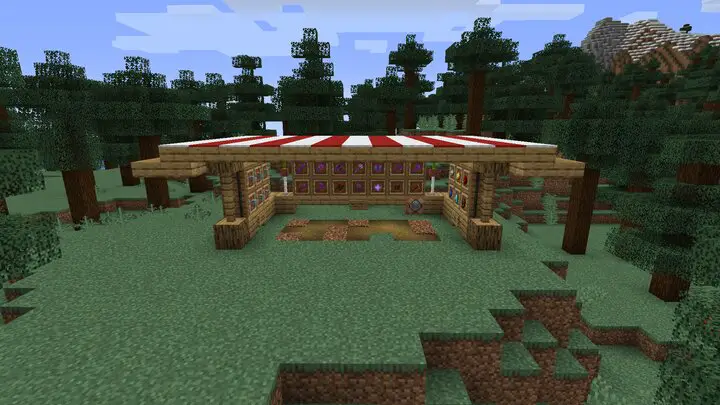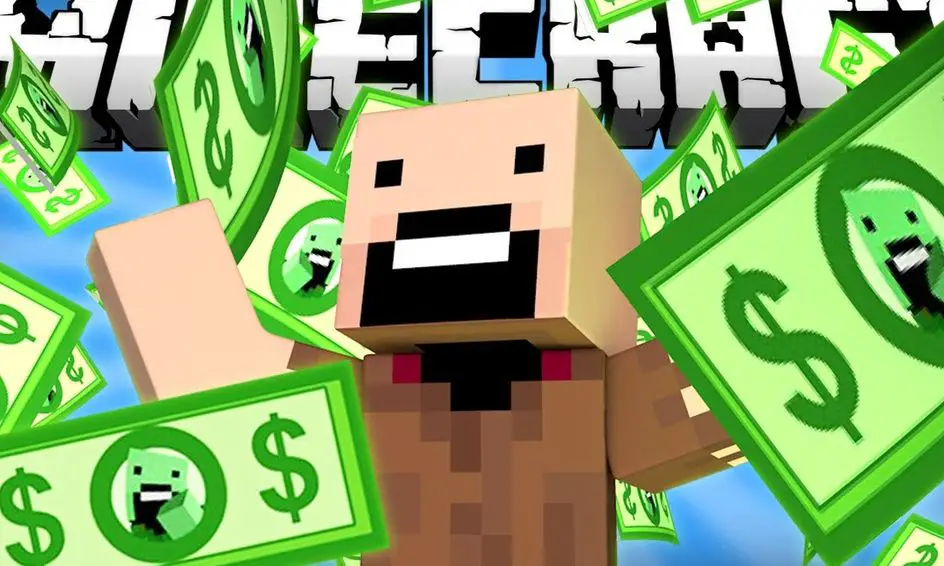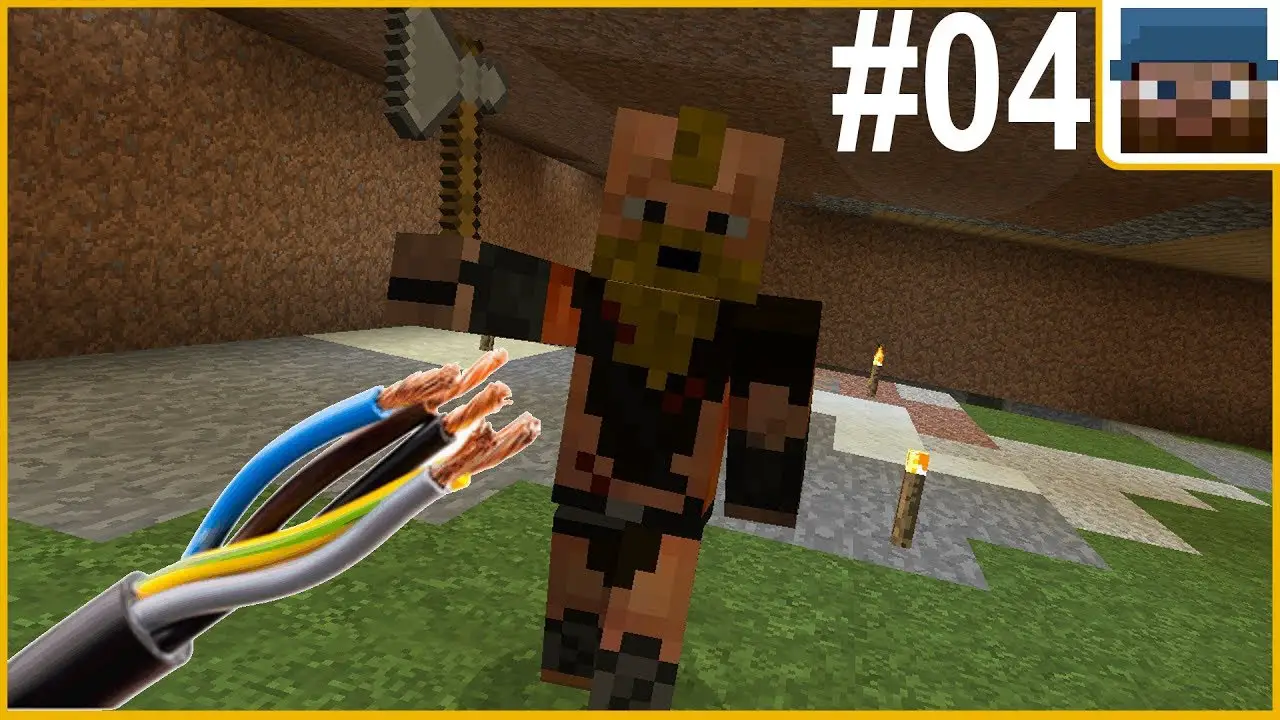The Economics of Minecraft: Trading, Markets, and Currency

Minecraft, a game beloved by people of all ages, is not just a virtual world of blocks and adventures; it also offers a fascinating glimpse into the realm of economics. Within the game’s virtual economy, players can engage in intricate trades, establish bustling markets, and even create their own currencies.

Trading:

At the heart of Minecraft’s economy lies the concept of trading. Players can engage in trade with non-player characters (NPCs) called villagers. These villagers have specific professions, such as farmers, librarians, or blacksmiths, and they offer unique goods and services in exchange for items that players possess. Through skillful trading, players can acquire valuable resources, rare items, and even enchanted gear.
Markets:
As the player base of Minecraft grew, so did the need for a more robust trading system. Enter player-created markets. These virtual marketplaces serve as hubs for players to gather, showcase their goods, and engage in barter or direct sales. Markets can be found on public servers, where players can connect from all corners of the world, or within private realms, where a select group of friends or acquaintances can conduct their business.
Currency:
While trading in Minecraft can be done through direct exchanges of goods, the introduction of currency further enhances the game’s economic depth. Various items have been adopted as de facto currencies, serving as universally accepted mediums of exchange. Gold, diamonds, and certain rare resources have all been used as currency at various times, their value determined by supply and demand.
Economic Strategies:
Within the Minecraft economy, players can employ various strategies to maximize their wealth and influence. Some players specialize in gathering and selling rare resources, capitalizing on the high demand for these items. Others focus on farming and producing food, ensuring a steady flow of income. Market savvy players might buy and sell items at opportune moments, taking advantage of price fluctuations. Some players even create intricate automated farms or elaborate trading systems to optimize their economic output.
Conclusion:
The economics of Minecraft offer a microcosm of real-world economic principles. The intricate interplay of trading, markets, and currency creates a dynamic and engaging environment where players can learn about supply and demand, the concept of value, and the importance of scarcity. Whether it’s through shrewd trading or strategic resource management, Minecraft’s economy challenges players to think critically and develop their economic acumen.## The Economics Of Minecraft: Trading, Markets, And Currency
Executive Summary
Minecraft, a sandbox video game known for its creative and explorative aspects, also features a complex virtual economy with trading, markets, and a virtual currency. This article explores the economics of Minecraft, analyzing its trading system, market dynamics, and the role of currency. By understanding these aspects, players can optimize their gameplay, facilitate trades, and contribute to the Minecraft economy.
Introduction
Minecraft’s virtual economy is a fascinating aspect of the game, offering players opportunities for trading, bartering, and engaging in market activities. The game’s currency, known as “Emeralds,” plays a central role in facilitating transactions and fostering economic interaction among players.
Subtopics
1. Trading System
Minecraft’s trading system provides a platform for players to engage in mutually beneficial exchanges. Villagers, non-player characters in the game, act as traders and offer various items for trade.
- Trading Mechanics: Trading with villagers involves offering items desired by the trader in exchange for items the player seeks. Each villager has specific preferences and a trading range, influencing the items and prices.
- Bartering: Players can also engage in bartering with other players, directly exchanging items without involving emeralds. Bartering allows players to negotiate deals based on mutual needs and preferences.
- Player Shops: Many Minecraft servers feature player-created shops where players can display and sell items. These shops facilitate player-to-player trading, allowing players to specialize in certain goods or services.
2. Markets and Supply & Demand
The Minecraft economy revolves around markets where players interact to trade goods, services, and resources.
- Market Dynamics: Minecraft’s markets are driven by supply and demand. The availability and desirability of items influence their prices. Players can observe market trends and adjust their trading strategies accordingly.
- Scarcity and Value: Rare or hard-to-obtain items tend to have higher value in Minecraft’s economy. Players can capitalize on this by acquiring and trading such items strategically.
- Emeralds as Currency: Emeralds serve as the primary currency in Minecraft, enabling players to purchase items and services from villagers and other players. Emeralds can be obtained through mining, trading, or completing quests.
3. Currency and Inflation
Emeralds, as the virtual currency in Minecraft, are subject to economic principles.
- Currency Value: The value of emeralds fluctuates based on supply and demand. Periods of high demand for goods and services may lead to emerald inflation, while periods of low demand can result in deflation.
- Currency Generation: Emeralds enter the Minecraft economy through mining, trading, and completing quests. New emeralds are continually introduced, affecting the currency’s value.
- Currency Stability: The rate at which emeralds enter the economy can impact currency stability. Consistent emerald generation helps maintain currency value, while sudden influx or depletion can cause fluctuations.
4. Economic Roles and Specialization
Players in Minecraft’s economy can adopt various economic roles and specialize in certain activities.
- Merchants: Players can establish shops and become merchants, selling items and services to other players. Specialization in specific goods or services can lead to increased revenue and market dominance.
- Builders: Players skilled in construction can specialize in building houses, structures, and other creations for other players, charging fees for their services.
- Farmers: Players can focus on farming, producing food and resources, and selling them in markets or to other players. Specialization in farming can yield steady income and contribute to the overall food supply.
5. Economic Impact of Updates
Updates to Minecraft can significantly impact the game’s economy.
- New Items and Resources: Updates often introduce new items and resources, affecting the demand and prices of existing items. Players can anticipate these changes and adjust their trading strategies accordingly.
- Gameplay Changes: Updates may introduce new gameplay mechanics or features that influence economic activities. Players need to adapt to these changes and explore new economic opportunities.
- Community Response: The Minecraft community’s response to updates can also shape the economy. If a new feature or item is popular, it can drive demand and increase its value. Conversely, unpopular changes may lead to decreased demand and lower prices.
Conclusion
Minecraft’s virtual economy offers players a unique and engaging experience, allowing them to engage in trading, market activities, and economic interactions. The trading system, market dynamics, and role of currency all contribute to the complexity and richness of the Minecraft economy. Players who understand these aspects can optimize their gameplay, make informed trading decisions, and contribute to the overall economic activity within the game.
Keyword Phrase Tags
- Minecraft Economy
- Trading System
- Market Dynamics
- Emeralds
- Economic Impact

The post provides an insightful overview of the economics of Minecraft in a way that is clear and accessible to players of all levels.
This article is an excellent resource for understanding the mechanics of Minecraft economy.
The examples provided in this article demonstrate the practical applications of economic principles within the game.
The article lacks depth and fails to explore some key aspects of Minecraft economy, such as the impact of player behaviour on market dynamics.
I disagree with the author’s claim that the value of items is solely determined by their scarcity it is also influenced by factors such as utility.
Of course, the most valuable items in Minecraft are virtual building blocks lol.
Wow, who would have thought that a game about building things would have an economy?
I wonder if the Piglin’s gold obsession is a commentary on real-world economic systems.
It is important to note that the Minecraft economy is not a closed system and it is influenced by external factors such as updates and player behaviour.
The article could have benefited from a discussion on the ethical implications of the real-world economy influencing the in-game economy.
I am curious to see how the Minecraft economy will evolve as the game continues to grow and change.
The validity of the article’s economic analysis is dependent on the accuracy of the data it relies upon, which is not provided.
The article presents a biased view of the Minecraft economy by focusing on the benefits of trading while downplaying the potential risks.
The fact that Minecraft has an economy is proof that gamers will find a way to make anything competitive.